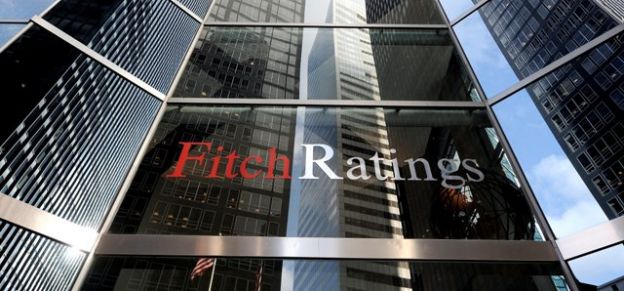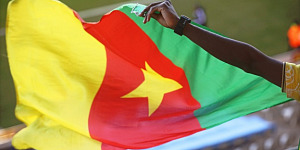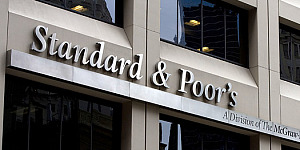Fitch Ratings has affirmed Cameroon's Long-term foreign and local currency Issuer Default Ratings (IDR) at 'B'. The Outlooks are Stable. The issue rating on Cameroon's senior unsecured foreign currency bond has also been affirmed at 'B'. The Short-term foreign currency IDR has been affirmed at 'B'. Fitch has also affirmed the Country Ceiling for Cameroon at 'BBB-', in line with the Country Ceiling for the Communaute Economique et Monetaire d'Afrique Centrale (CEMAC).
KEY RATING DRIVERS
Cameroon's 'B' ratings balance low GDP per capita at USD1,200, less than half that of the 'B' median, and structural weaknesses (including governance and political), against sustained economic growth and macroeconomic stability provided by membership of the franc zone of the CEMAC. This assures currency convertibility and reduces foreign exchange liquidity risks.
Cameroon has proved more resilient to the sharp decline in oil prices than its oil-producing peers. This is due to its more diversified economy, with the oil sector accounting for less than 10% of GDP. Economic growth remained robust in 2015 at 5.9%, boosted by a 25% increase in oil production and we forecast the economy to grow at 5.5% in 2016-2017, as the non-oil sector benefits from public spending on infrastructure.
However, the collapse in oil prices has adversely affected Cameroon's public finances and external position as oil revenues represent 20% of government revenues and more than 40% of exports. Fitch has revised its average oil price forecasts to USD35 per barrel for 2016 and USD45 per barrel for 2017, down from USD60 and USD70 respectively at its previous rating review in November 2015.
We therefore expect Cameroon's fiscal deficit to widen in 2016 to 4.6% of GDP from a better-than expected 3.1% of GDP deficit in 2015. The lower 2015 deficit relative to our forecast (of over 5% of GDP) was due, on the spending side, to lower than budgeted capital expenditure and large savings in oil subsidy spending, and on the revenue side, to higher non-oil revenues reflecting earlier measures taken to broaden the VAT tax base and introduce a new excise duty.
Subdued oil price forecasts for 2016-2017 should alleviate some pressure on the budget due to lower oil subsidies, but this will be insufficient to offset the 30% expected decline in oil revenues and the increase in capital spending. Fitch forecasts the budget deficit to remain broadly flat at 4.5% in 2017, supported by recovering oil prices, robust economic growth, and the developing non-oil sector.
Fitch expects government debt to reach 30% of GDP by 2017, on the back of the wider fiscal deficits. Although still well below the B median of 54% of GDP, Cameroon's large financing needs have led to a rapid increase in the debt to GDP ratio from just 13% in 2008. The shallow local capital market has forced the government to increasingly turn to non-concessional and external borrowing, leading to a more-than doubling of forecast interest expenditure by 2017 (5.1% of government revenues). A shift in the debt profile from low-cost and concessional to higher-cost at market terms weakens financing flexibility and debt sustainability.
Public finance management remains a key rating weakness. The government routinely runs up arrears, notably to public companies, as a form of financing. In addition, contingent liabilities related to state-owned enterprises are estimated by the IMF at around 15% of GDP at-end 2013 and represent an additional risk to debt sustainability. However, we note that the government has cleared most of the arrears it owed to the oil refinery, SONARA, and the net outstanding stock has declined to CAF97bn (0.6% of GDP), from CAF218bn (1.4% of GDP) at end-2014.
Large import-intensive investments in infrastructure coupled with lower commodity export earnings will lead a further widening of the current account deficit to 6% of GDP in 2016, from 4.6% in 2015. Fitch expects the current account deficit to be more than financed by inward FDI and external borrowing, leading to an increase in reserves over 2016-2017 (to around USD4bn or five months of import cover). However, debt-financed infrastructure investments will rapidly push up gross external debt to 104.8% of current account receipts by 2017 from 61.1% in 2014. Net external debt is forecast to reach 13.8% of GDP by 2017, from 7.8% in 2014.
The eventual succession to President Biya, aged 83, is a continuing source of political risk. The immediate transition issue has been resolved with the 2013 senatorial elections, as the President of the Senate will assume power in the transition period. However, the succession to President Biya could destabilise the balance of power between the different religious, ethnic and linguistic groups, in particular between the north (Muslim) and the south (Christian), in the context of the unstable security situation in the north, linked to the activity of the Boko Haram terrorist group.
Fiscal and economic management is hampered by the weak quality and timeliness of balance of payment and fiscal data.
SOVEREIGN RATING MODEL (SRM) and QUALITATIVE OVERLAY (QO)
Fitch's proprietary SRM assigns Cameroon a score equivalent to a rating of 'B' on the Long-term Foreign Currency IDR scale.
Fitch's sovereign rating committee did not adjust the output from the SRM to arrive at the final Long-Term Foreign Currency IDR.
Fitch's SRM is the agency's proprietary multiple regression rating model that employees 18 variables based on three year centred averages, including one year of forecasts, to produce a score equivalent to a Long-Term Foreign Currency IDR. Fitch's QO is a forward-looking qualitative framework designed to allow for adjustment to the SRM output to assign the final rating, reflecting factors within our criteria that are not fully quantifiable and/or not fully reflected in the SRM.
RATING SENSITIVITIES
The Stable Outlook reflects Fitch's assessment that while downside risks to the rating have increased, the upside and downside risks to the rating are broadly balanced.
The main risk factors that, individually or collectively, could trigger negative rating action are:
- Further large budget slippages, which accelerate the accumulation of public debt.
- A widening of the current account deficit, leading to growing external indebtedness.
- Political events triggered at the time of the succession to President Biya or an intensification of Boko Haram terrorist activity.
- A slowdown in GDP growth that would worsen debt dynamics and widen the gap between GDP growth and per capita incomes compared with rating peers.
The main factors that, individually or collectively, could trigger positive rating action are:
- Genuine efforts by the government to improve the management of public finances, leading to a reduction in arrears to public enterprises and state suppliers, and a reduction of the debt/GDP ratio.
- Effective measures to improve the business climate and growth.
-An increase in hydrocarbons production related to new discoveries coming on-stream, generating an additional source of income and reversing the trajectory of depleting oil reserves.
KEY ASSUMPTIONS
- Fitch does not expect the conflict with the Boko Haram terrorist group to be resolved soon, but at the same time it does not expect the tensions to escalate significantly. Security issues linked to the activity of the Boko Haram terrorist group remain confined to the north of the country.
- Fitch assumes no break-up of the CEMAC monetary arrangement.
- Fitch's current assumption for Cameroon's medium-term growth potential is 5.5%.
- Fitch assumes that the oil price (Brent) will be USD35 per barrel in 2016, and USD45 per barrel in 2017.





































